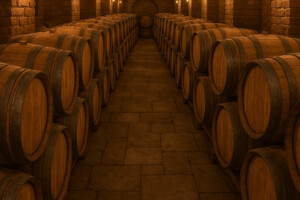
Italy is still the leading exporting country in the United States, but to consolidate its leadership in years of slow growth, it must accept the challenge of taking new paths. New market trends indicate the path to follow, new ideas and, above all, the attitudes of consumers who change along with their wine consumption habits. From rosé to polarized price ranges, from packaging to the canned wine, diversification seems to become a keyword for the future of wine. An analysis, from the Porto Cervo Wine & Food Festival, made by Mike Veseth, the Wine Economist, and Sandro Sartor, MD Constellation Brands Europe, Middle East, Africa & Ruffino as protagonists. The Italian wine market in the United States must grow further, thanks to new trends.
“Wine consumption has stopped since 2007. World markets have resumed, while wine consumption has come to a standstill. In the United States - explains Mike Veseth, an expert in data analyzing - there are more factors. There are, nowadays, many markets where we can go to act”. “Italy is the number one country for imports into the United States, according to Nielsen data. It is growing in quantity and value but at a slow pace. France is growing faster, but it is still small in numbers. Spain is still behind. The difficulty of growth concerns large masses such as the Italian one, which has reached a maximum expansion. In order to be successful on the American market, a country must have an identity and must divide its sales channels into two, between premium and superpremium. Spain, for example, does not have wines that stand out and do not have a high quality”. Mike Veseth’s reasoning also covers a reflection on the average prices of Italian wine: “The wines with the highest price are also those that grow more, especially those at a price above $ 11. On the other hand, there are those in the $4-7.99 range. American consumers do not want to spend more money on wines they already know. They want to diversify their spending and are willing to spend more on something new. The range of different wine labels has grown. Nowadays, there are up to 120,000 labels. This variety represents uncertainty for the various types of wine, for example, Moscato, which until a few years was growing, now stops. Today, Pinot Grigio, Chardonnay and Rossi blends grow. New Zealand’s Sauvignon Blanc increases by doubling its production every year. The record growth is recorded by the Rose which grows by 50% on an annual basis. These roses come from most of France, and this drives the French wine industry. One of the strongest sales trends in the US today is represented by alternative packaging, all those innovative forms of bottling and selling wine. The 3-liter boxes for premium wines and also the canned wine grow a lot. In other words, the “Sofia” by Francis Ford Coppola, or “Off Road”, designed for trekking enthusiasts who do not want to carry the weight of a bottle of wine and want to enjoy a drink. Despite the higher price compared to products generally sold in cans, the American consumer is attracted by this new format.
Another point of view on the new trends of the American market is highlighted by Sandro Sartor, who like Constellation Brand, knows market realities at an international level and especially the American one: “the wine system in America is plastered and tends to protect. But the effort of innovation is also widely present in Italy, especially from the world of wine experts, an example is the screw cap. New trends grow. The Rosé is the proof,” he continues on the price of wine in relation to innovation: ”it is not enough for a wine to be expensive, it must deserve it. In other words, to have a higher price, it must satisfy one need better than the others. Until a few years ago, luxury products only met the status quo, but now the concept has changed. A wine survives in high price ranges if it meets a need. The wines of Tuscany, for example, satisfy an “emotional” need of American consumers who have always had a strong holiday bond with Tuscany”. The issue of the difficulty of innovation also concerns the denominations: “the regulations of the Doc, risk hindering the wine in front of the needs the world. This also applies to the resistant vineyards, in which a lot of money has been invested, but they are not yet recognized by the Consortia. In this case, protection risks to become a limit for promotion on world markets. Young people in Italy start to drink wine from the age of 21. They are ready to experiment without prejudice, with intelligence. For the cans, we presented as Constellation Brand, a line that has aroused so much interest in young audiences”.
Copyright © 2000/2025
Contatti: info@winenews.it
Seguici anche su Twitter: @WineNewsIt
Seguici anche su Facebook: @winenewsit
Questo articolo è tratto dall'archivio di WineNews - Tutti i diritti riservati - Copyright © 2000/2025